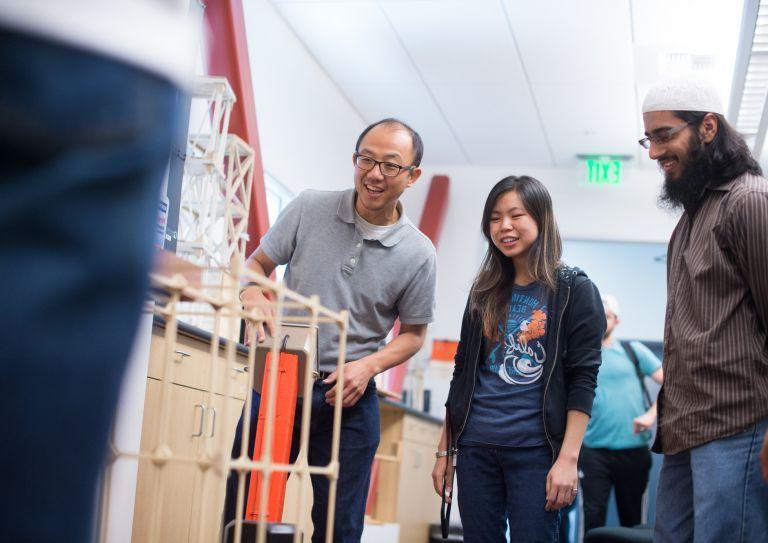“结构自由!学生们喊道. Luke Lee walks into the classroom. 结构自由 is Lee's online alias, otherwise known as the name of his YouTube channel that focuses on civil engineering-related tutorials for students. Initially inspired by the Khan Academy videos, Lee's evolution to YouTube superstardom started one day in class while he was trying to schedule a review session before an exam, but the class could not find a time to meet collectively. Lee then decided that he would make a video of the review problems and post it on YouTube. With no promotion other than word of mouth, the popularity of the videos grew as he received views, 喜欢, 评论, and subscribers from all over the world, 从加拿大到澳大利亚.
Lee's love for engineering began at an early age whether he realized it or not. Growing up, he loved playing with Legos and K'Nex toys. He had always enjoyed math and science and admired structures and marveled at how tall they were. The moment that really stands out as future-defining was a bridge building competition in the seventh grade in which groups of students had to build a bridge out of toothpicks and his group won. That moment solidified his passion for engineering. He later attended college at UCLA as an undeclared major. It was through a year-long learning process during his freshman year that he realized civil engineering was his calling. He later 应用 to be in the engineering school and was admitted.
So how did he end up at Pacific? Lee was teaching at Louisiana Tech University where they were hosting an ASCE (American Society of Civil Engineers) conference. 正是在那里,他遇到了史密斯博士. Camilla Saviz, one of the event evaluators. He asked where she worked at and she mentioned 博彩平台网址大全 in Stockton, 加州, and how much she enjoys working there. Lee was astonished because it was the first time he had heard someone say they truly loved where they were working and were passionate about it. He did his re搜索 on Pacific and the following year, he saw an ad for a job opening, 应用, 得到了这份工作! 从那时起, he has become a valued member of the Pacific faculty and continues to enjoy working with students and colleagues every day. His favorite part about teaching at Pacific is working with students who are trying to fulfill their true potential and he gets to be a part of that journey.
That drive to support his students is what got him started with his YouTube channel. He wanted to create "a place you can go without any sort of order and you can learn" and that is exactly where the name, 结构自由, 来自. The topics covered by his videos are based on his students and what they need. He incorporates videos into the classroom as well. He started a "Mechanics of Materials" playlist in which his students could watch the concept videos and answer a few short answer questions before coming to class. 这种方式, class time focuses on reviewing and problem solving in groups, which makes lessons more active, 以学生为中心, and they include concept applications. Students enjoy Lee's system more than traditional methods because it makes class more fun, 现代, and focused on solving problems, which is the most important element for a successful engineer. Even though he never reveals himself in the videos, the channel is a good representation of Lee's personality. From the chipper voice to the 90's music references, he makes learning fun.
A huge part of Lee's viral success comes from the reactions of the YouTube community. People from all over the world ask questions and share their successes. 超过63岁,000 subscribers and a whopping 9,250,000 +的观点, Lee is a viral sensation not only at Pacific's School of Engineering and 计算机科学 but on YouTube too. He also posts some of those videos on a Facebook page he set up called 结构自由 Learning. When asked if he has a name for his fans, Lee said "No I don't but maybe I should!"
Having made YouTube videos since 2011, Lee's channel has grown exponentially in popularity. So what's next for 结构自由? Lee is currently working with fellow Pacific professor and colleague, Dr. 赫克托耳埃斯特拉达, to do a series on Earthquake Engineering that will be tailored for people studying for the PE (Principles and Practice of Engineering) exam. Lee and Estrada hope that they can bring the same kind of enthusiasm and energy to earthquake engineering and perhaps spinoff into even more civil engineering concepts.



